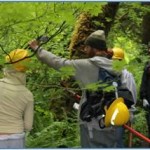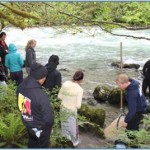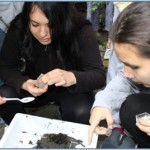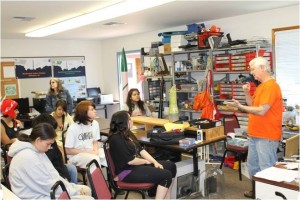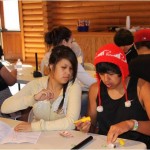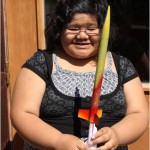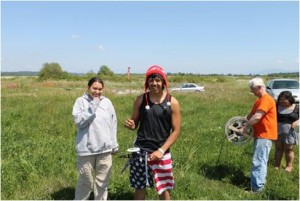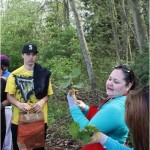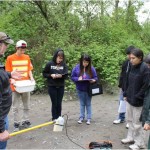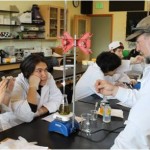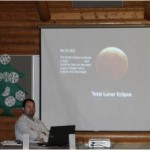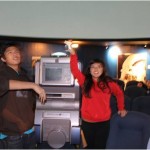June 12th, 2012
Service-Learning at Horseshoe Bend Trail – Mt. Baker
This was the fourth of four Saturday Science Academy (SSA) events to be hosted by the Science Program of Northwest Indian College (NWIC) for the Spring Quarter 2012. On this event, students joined the US Forest Service Staff at Mt. Baker-Snoqualmie National Forest to help clean-up and maintain a heavily used local trail along Horseshoe Bend of the North Fork of the Nooksack River. Students arrived early to the Glacier Public Service Center on a brisk and chilly morning to meet Kathy Vue and Stella Torres who were hosting today’s service-learning event. After brief introductions among the students and staff, participants filed into the park office for a warm-up and exploration of wildlife displays and maps that introduced guests to the Mt. Baker Ranger District.
Once students were satisfied with their introduction to beautiful forested landscape, they were off to start their work to maintain and restore trail access of a local trail. Justin Paglia and his USFS trail crew initiated the students to the various tools and equipment used to clear brush and trim tree hedges from overgrowing the trail boundary. Each student was paired up with a staff member, practiced a few times with their tools, quickly donned their hard hats and gloves, and were off down the trail to do some hard work. The trail snaked its way along the edge of the Nooksack River, which provided beautiful scenery of wet, mossy river rock, bubbling currents of rushing water, and the music of morning birds on their way to feed their young.
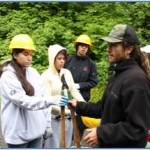
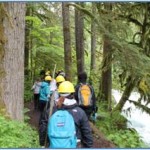
After about a half mile of hiking, students divided up their tasks and went straight to work removing low vegetation climbing its way across the edges of the trail, to trimming low hanging branches that snag hikers as they pass, and to removing leaf and twig litter that had fallen in a recent storm. The students were eager to be busy working as the cool air from the river and the little sunshine that came through the over cast skies drew many to shiver and bundle up in their loose spring sweatshirts. The work seemed to finish up quickly along a quarter mile after three hours of labor and the students found themselves hungry. After hiking back down the trail, thanking our trail crew leaders and jumping in the van, the students were off again to the next stop at Douglas Fir Campground for lunch.
After lunch, students went for a short hike and lessons about local native plants and their uses by native peoples of the Pacific Northwest. The students enjoyed finding salmonberries, Oregon grape, bracken fern and so many others. Once the short lessons were over, the students played a few games of “Searching for Sasquatch.” Students hurried themselves around in search of Sasquatch and then quickly finding partners when a number is called out to start a different activity. Those students without a partner were then called out of the game and the game continued until only two students remained. After the games, students were engaged with instruction from Sean Martin of the Nooksack Salmon Enhancement Association. He brought students down to the river’s edge to examine small invertebrate insects caught in a net after kicking up rocks in the current. These insect form the foundation of the diet of local salmon and are vital to the success of the river ecosystem to allow runs of salmon to return each year. The day finished with discussions the salmon life cycle and a big wave goodbye to the park as we cranked up the heater for the long ride down the mountain back home. 🙂


